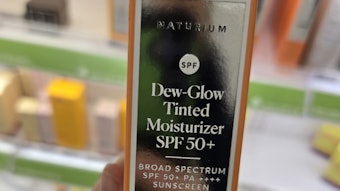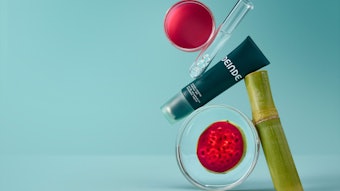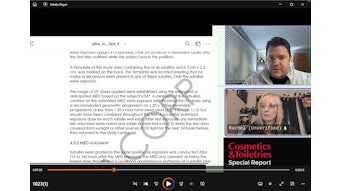
Over the last decade, Vincent Hubiche, personal care application lab manager at Gattefossé SAS, focused on leading the field of sensory analysis in skin care. At Sunscreen Symposium 2015, he shared insight on climate’s influence on sunscreen application and how consumers need to be better informed about the amount of sunscreen they wear.
Cosmetics & Toiletries: How does climate influence skin care? Has the need for sun protection changed over the years, particularly with climate change?
Vincent Hubiche: Climate influences both the state of skin and its needs. In humid and warm climates, the skin is more hydrated and needs lighter skin care. In colder, drier climates, the skin is much drier. Indoor heating also significantly dries out the inside air, with humidity levels in homes and offices below 30-40% relative humidity. In such conditions, skin rapidly becomes dehydrated, and richer, more emollient skin care is necessary to protect it.
Climate also influences the perception of skin care by the user. Take texture, for example. When it is warm and humid, skin creams are perceived as being more oily and film-forming than the same creams under normal test conditions. This explains why, in humid countries such as Brazil, there is net preference for ultra-light, low film-forming skin care.
For SPF products with higher concentrations of UV filters, the perception of oiliness and tackiness is even higher, and this can lead to consumers using less sunscreen or even avoiding it altogether. Yet it is just as important to protect the skin under these conditions.
With climate change, not only is the temperature of the planet increasing, but also the humidity. So to answer to your question, it is not really the need for sun protection that is changing but the need for sunscreens to better adapt to new climatic conditions. Other factors, such as pollution, are also known to directly and indirectly impact skin, leading to skin aging, inflammatory or allergic conditions. When combined with UV rays, these effects could be emphasized.
C&T: What is the best type of UV filter for the most protection? Are there any drawbacks to this type?
VH: It is impossible to use a single UV filter, as none are sufficient to cover the broad spectrum of UV. It is only by combining filters that we can obtain the best protection, due to synergistic effects between filters.
An increasing number of consumers prefer mineral sunscreens to chemical ones, but it is highly difficult to obtain broad-spectrum protection and good sensory properties using only minerals. On the other hand, chemical UV filters that are approved for use demonstrate low efficacy, such as homosalate—one of the less efficient UVB filters. At 1%, it gives an SPF below one.
Perhaps the best answer is a combination of UV filters having sensory properties that are pleasing to the consumer. This ensures the product is used correctly and frequently. Sensory is a key parameter to improving the compliance of consumers, and in doing so, improving their protection via the more frequent application of sunscreen all day and all year.
C&T: What level of SPF provides the best protection?
VH: Up to now, it has not been possible to define the best protection for everyone, and the general answer could be: the higher the better. But to be efficient, a sunscreen must be applied properly, and so we are back to the problem of compliance.
An SPF 30 has been shown to filter 97% of UV rays; SPF 50, 98%. Some consumers prefer the SPF 50 but it should be noted: it’s preferable that they apply the SPF 30 more often, than applying the SPF 50 only once in a day.
Even the daily use of an SPF 15 will bring beneficial effects to the skin, slowing aging and improving appearance. Again, since the sensory effects of low-SPF sunscreens are generally better than high-SPF sunscreens, i.e., less greasy and tacky, consumers will be encouraged to use them more often.
C&T: Are there any disadvantages to wearing sunscreen?
VH: Some argue that wearing sunscreens is harmful because it blocks UVB from reaching the skin to induce mechanisms for producing vitamin D. But only a few minutes per day under the sun are necessary to allow skin to produce enough vitamin D.
Another concern is over toxicity. I will not list them, but some UV filters are known or suspected to cause allergic reactions in skin, hormone disruption or to penetrate the skin. More and more companies therefore try to avoid the use of these sun filters, to provide safer products to consumers. But especially in the United States, the choices for UV filters are really limited. So, like medicines, brands must balance risk and efficacy with the maximum possible safety for consumers. The U.S. Food and Drug Administration’s approval of safer UV filters is greatly expected by the industry.
C&T: Are there other challenges to sunscreen application?
VH: Besides safety, the main challenges are related to the sensory properties of existing sunscreens, which are often sticky and oily. However, things are improving with the work of formulators all around the world, who are sharing tips to reduce the negative sensory impact of UV filters in creams.
Of course, more efficient UV filters help to reduce the total amount of UV filters necessary in a sunscreen, which in turn facilitates the development of better products. The goal is to develop sun care formulas having the sensory effects of skin care formulas, so consumers can really enjoy applying sunscreen.
C&T: As a sunscreen formulator, if you had a “magic bullet” technology in your sun protection toolkit, what would it be? How would it work?
VH: We would like to see more broad-spectrum UV filters that are hydro-soluble and can be formulated at a pH under seven to make conservation easier. We also would appreciate oil-soluble filters that are easier to solubilize or are more efficient. Finally, we would also like to see more natural SPF boosters that actually work and also improve the sensory properties of formulations.
C&T: What do you see as the future for sun care?
VH: In the future, the consumer will be unable to differentiate between a skin care cream and a sunscreen, as the sensory properties will be vastly improved. The influence of climate on sensory properties will be neutralized by smart ingredientsa that correct for skin feel—whatever the climate. In the United States, new high-performance UV filters may be approved, making it easier to reach higher SPF levels of protection with the right UVA protection.
C&T: At the 2015 Sunscreen Symposium, one of the biggest challenges discussed was educating the public about sunscreen use; particularly how much sunscreen should be used for respective SPF levels. What can sunscreen product developers do to support this education?
VH: Many brands have made some fabulous recent campaigns to educate the public about sunscreen use. One such campaign, promoted in Brazil, used UV cameras to show the effects of sun damage on skin, to make the public more aware of the need to protect their skin.
Targeting higher and higher SPF values is certainly not the right way to educate consumers. Sunscreen formulators should concentrate on improving the sensory properties of sunscreens, which will lead to higher compliance and better use.
To learn more of Hubiche’s insight about protecting the skin and the significance of applying sunscreen during cold or less sunny days, visit the Skin Inc. website.










